In today’s sport, performance analysis plays a crucial role in winning games, with women’s football being no exception.
As a decision-maker in football, you recognize how performance metrics and football analytics yield valuable insights into team development, player performance, and competitive advantage.
These insights drive your strategies leading to improved performance on the pitch.
Understanding the value of performance analysis in football extends beyond providing game data; it enables a comprehensive, evidence-based approach to fully realise your team’s potential.
In recent years, women’s football has gained increased attention, and rightfully so.
Bridging the gender gap in football analytics ensures women’s teams obtain the same advantages as their male counterparts.
Analysis and statistics in women’s football provide valuable contributions to sports development, facilitating better decision-making processes.
Key Takeaways
Performance metrics and football analytics empower decision making in women’s football, leading to better team and player development.
Match analysis and tactical analysis enable teams to achieve a competitive advantage through informed decision-making and targeted strategies.
Investment in performance analysis is essential for the development of women’s football.
Understanding Football Analytics
Football analysis plays a crucial role in team and player development, as well as in match and tactical analysis. By using data analysis and performance metrics, you can gain a competitive advantage and improve the overall performance of your team.
By utilizing performance analysis tools, you can better understand the strengths and weaknesses of your players and develop more effective training programs to support their growth. For instance, FIFA’s professional football journal highlights the importance of analytics in supporting women’s football development.
Here at iSportsAnalysis we recognize not all clubs and teams can afford to pay for analysis tools, or the analysts needed to code games and provide the necessary metrics. We have our own team of highly trained analysts who can generate the statistics you need to improve your team performances and develop your players.
An example of some of the metrics in our reports are as follows:
Possession, Penalties, Regains Won, Free Kicks, Total Shots, Shots On Target, Shots Wide, Blocked Shots, Shots Saved, Crosses, Corners, Throw-Ins, Fouls Committed, Yellow Cards, Red Cards, Offside, Home Regains Won, Attacking 1/3 Entries to Shots, Shots to Goals, Attacking 1/3 Entries to Goals, Opp Attacking 1/3 Entries to Shots, Opp Shots to Goals, Opp Attacking 1/3 Entries to Goals, Opposition Regains Won.
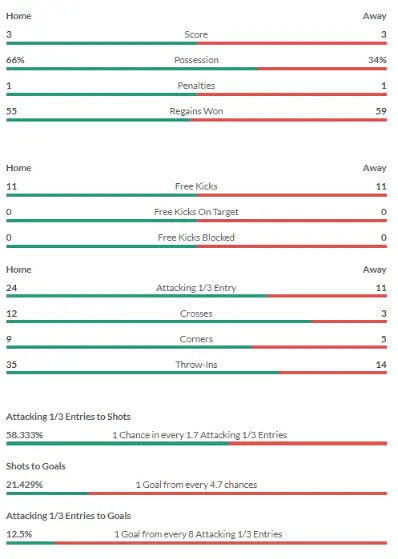
In summary, embracing football analytics can lead to improved performance and development of your team and players. By utilising analysis in your decision-making process, you can make more informed choices that help to improve your team and player performances.
The Importance of Performance Analysis in Football
In today’s competitive world of football, you cannot afford to overlook the significance of performance analysis. These metrics help you gain valuable insights into player and team performance. You can make more informed decisions, enhance player development, and drive your team’s success on the field.
Performance metrics act as a crucial tool for player development, enabling you to identify the strengths and weaknesses of individual players. Using football analytics, you can track various aspects such as goal conversion rates and successful pass percentages to evaluate a player’s efficacy in their position. These insights aid in creating tailored training programs focused on improving specific skills, leading to better performance on the field.
For team development, data-driven decision-making plays a pivotal role. Analysis of a team’s performance can uncover tactical weaknesses and highlight areas that require improvement.
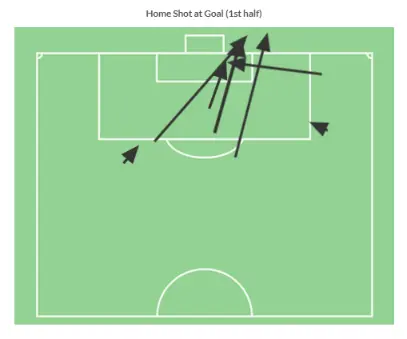
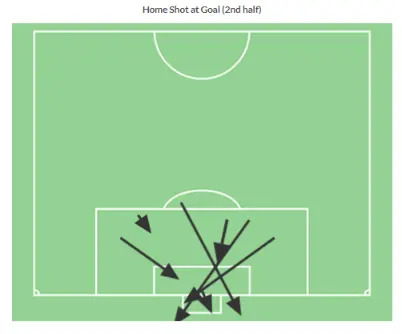
By analyzing data on factors such as ball possession, passing accuracy, and goal-scoring opportunities, you can identify patterns and devise strategies to exploit the opponent’s vulnerabilities. This approach not only enhances your team’s overall performance but also contributes to a competitive advantage.
Tactical analysis becomes more streamlined with the help of performance metrics in football. You can study various tactics employed by opposing teams and devise countermeasures based on data-driven insights. For instance, information on an opponent’s preferred set-piece routines, attacking patterns, and defensive formations can be invaluable during match preparation.
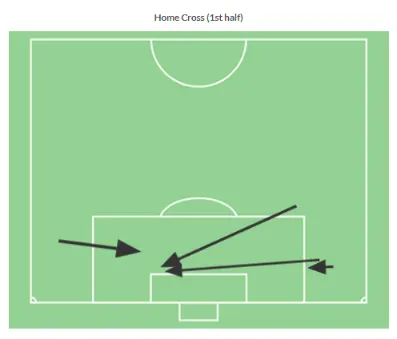
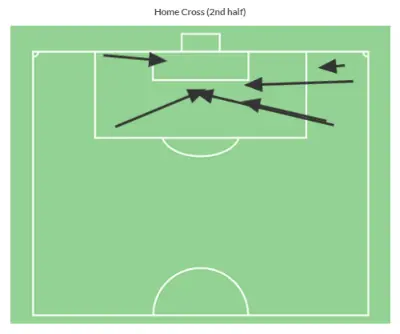
In conclusion, performance analysis plays a crucial role in the development of women’s football. Performance metrics are essential for player and team development. Using match analysis and tactical analysis you stand to gain valuable insights that can significantly improve your team’s performance and level the playing field in the world of football.
Analysis for your team
Unlock your competitive advantage!
The Role of Data-Driven Decision Making in Women’s Football
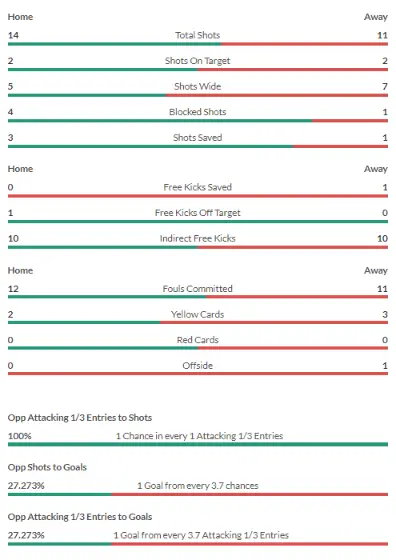
One area where data-driven decision making can have a significant impact is football analytics. By using game analysis, you can help your team improve its performance on and off the field. This can lead to better sports development, team development, and player development. For example, you can analyse player performance metrics, such as their pass accuracy, to identify strengths and weaknesses. By leveraging this data, coaches and managers can make informed decisions on tactics and player selection, ultimately leading to a more competitive team.
In addition to performance metrics, data-driven decision-making plays a vital role in women’s football. There’s a pressing need for equal analysis and statistics in both men’s and women’s football to bridge the gender gap and promote a level playing field. By utilizing performance metrics and statistical analysis in women’s football, you can recognize and address any gender bias that may exist in the sport.
Moreover, integrating analytics into women’s football can help improve performance and foster growth within the sport. As a result, teams can gain a competitive advantage and ultimately contribute positively to the overall development of women’s football. This approach aligns with the growing sentiment that women’s football deserves the same attention as men’s football, making the integration of data-driven decision making all the more essential.
In summary, incorporating data-driven decision making and statistical analysis into your sports strategies can lead to more informed decisions and a deeper understanding of team and player performance. By embracing the role of big data and technology in sports, you can elevate your team’s potential and work towards achieving a competitive edge.
Leveraging Analysis for Player and Team Development
By incorporating analytics into your coaching strategies, you can gain valuable insights that translate into better on-field performance. This is particularly important in women’s football, as it often faces less attention and resources compared to men’s football.
A strong emphasis on performance analysis in coaching staff can help you develop team strategies and optimize your tactics during matches. Analyzing games may reveal patterns in your opponents’ plays and guide your game plan.
In summary, leveraging the power of data analytics in player and team development can lead to a significant competitive advantage in women’s football. By incorporating statistical analysis and cutting-edge performance metrics into your coaching approach, you can drive your team towards success.
Match and Tactical Analysis in Football
By carefully examining your team’s performance and that of your opponents, you can gain valuable insights and make data-driven decisions to improve your team’s overall performance.
A key aspect of match analysis is identifying the playing styles and strengths of both your team and your opponents. By using event data from football matches, you can gain a better understanding of not only individual player performance but also strategic play. For instance, key performance indicators (KPIs) can help assess technical performance and reveal areas requiring improvement.
In addition to evaluating technical performance, developing a strong tactical understanding of the game is vital for success. By using data visualization and and the reports delivered by iSportsAnalysis, you can forecast and plan for different scenarios during matches. This enables you to make informed in-game decisions based on probable outcomes.
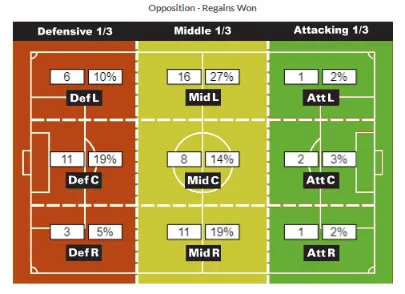
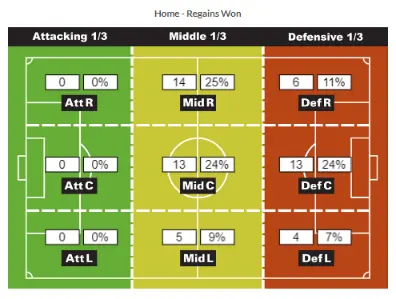
Tactical analysis includes examining various aspects of the game, such as playing styles, set pieces, and offensive and defensive strategies. By applying statistical analysis to both your team and the opposition, you can identify strengths and weaknesses, which can then influence your tactical decisions during matches.
In conclusion, match and tactical analysis in football is essential. The integration of performance analysis, data-driven decision-making, and a thorough understanding of event data enables you to gain a competitive advantage in this ever-evolving sport. By embracing these analytical approaches, you can promote the growth of women’s football, ensuring that the sport continues to develop and thrive for all.
Analysis for your team
Unlock your competitive advantage!
The Power of Performance Analysis in Achieving Competitive Advantage
Performance analysis provides valuable insights that help coaches, players, and clubs make informed decisions, leading to a competitive advantage. By embracing data analytics, you are able to strategically navigate the complexities of player development, match analysis, and tactical analysis to optimize your team’s performance and grow the sport, especially in the field of women’s football.
Your team’s development greatly benefits from performance analysis as it fosters a data-driven mindset and encourages you to consider multiple performance metrics.
In conclusion, adopting performance analysis in football gives you insights that help shape your decision-making processes and build a data-driven culture. Simultaneously, it boosts the growth and recognition of women’s football, empowering them to gain equal opportunities and attention as their male counterparts. Embracing data analytics will undoubtedly enhance your competitive advantage and contribute to the advancement of the sport as a whole.
Performance Analysis and its Impact on Women’s Football
In the United States, the sports industry generates substantial revenue, with football being one of the most popular sports. Utilizing a data-driven approach, teams can attract more investment and better talent scouts, which leads to improved performance on the field. This, in turn, can draw more fans to the sport and raise its overall profile.
One area where statistical analysis can have a significant impact is in player-driven analysis. By eneabling your players to analyze their own performances in their games, you are giving them the opportunity to self reflect and learn more about their performances. iSportsAnalysis encourages player accountability, and provides the tools required for this.
Frequently Asked Questions
What are the key performance metrics in football analytics?
Football analytics involves the use of various key performance metrics to evaluate individual players and teams. Some of these metrics include expected goals, possession, pass completion rate, tackles, interceptions, and player efficiency ratings. By analyzing these metrics, you can gain insights into the strengths and weaknesses of your team and individual players to better inform decisions.
How does statistical analysis contribute to sports development?
Statistical analysis plays a crucial role in sports development, as it offers objective data-driven insights into performance. By examining data, you can identify patterns, trends, and areas for improvement, allowing you to make more informed decisions about how to develop your team’s strategy and tactics. This, in turn, helps to optimize coaching, player development, and overall team performance.
What role does player development play in team success?
Player development is integral to the success of a team, as it ensures your players continually improve their skills, fitness, and mental preparedness. By focusing on individual development, you can help each player reach their full potential, resulting in a stronger and more competitive team. Additionally, nurturing talent can contribute to long-term success, as players mature and adapt to new strategies and tactics.
How does match analysis impact tactical decisions?
Match analysis involves the examination of your team’s performances, as well as those of your opponents, to make more informed tactical decisions. By understanding the strengths and weaknesses of both your own team and your adversaries, you can devise game plans tailored to maximize your chances of success. This might involve exploiting specific weaknesses in the opposition’s defense or implementing tactics that counter their attacking strengths.
In what ways does performance analysis provide a competitive advantage?
Performance analysis contributes to a competitive advantage by allowing you and your coaching staff to make data-driven decisions that improve your team’s performance on the pitch. Through the analysis of key performance metrics, you can identify areas for improvement, devise more efficient training methods, and implement game plans that capitalize on your team’s strengths and your opponent’s weaknesses.
How does data-driven decision-making benefit women's football?
Data-driven decision-making is essential for elevating women’s football and expanding opportunities for female athletes. By incorporating analytics into coaching, scouting, and player development, women’s football teams can optimize performance and compete at the highest level. Additionally, the equitable use of statistical analysis in both male and female football promotes inclusivity and helps bridge the gender gap in sports analytics.
Analysis for your team
Unlock your competitive advantage!

Anadi James Taylor
CEO - iSportsAnalysis Ltd
I am expert in helping sports clubs and universities with their Sports Video Analysis and their GPS Performance Analysis.
I developed iSportsAnalysis.com with top sports scientists, coaches and trainers to help maximise training gains and to optimise the performance of athletes and teams.
I have developed an online system that has helped over 120 universities, private schools and clubs to reach their true sporting potential; whether that has been from them using the online video streaming services, the online sports video analysis or the GPS performance analysis, the results speak for themselves!
We help you win matches!
You can find out more at iSportsAnalysis.com.

